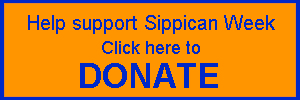Joint School Committee opens up about in-person plan
The Old Rochester Regional School District has continued to come under fire over its unwillingness to shift to full in-person learning.
Stephanie Clark, representing parent group Mattapoisett Concerned, which aims to return younger elementary students to in-person learning, complained to the Joint School Committee on Nov. 19 that “parents are still not getting full and complete answers from this administration” about when and how the district plans to shift back to full in-person learning.
In August, the state required every district to draw up three learning plans: one for remote-only, a hybrid plan mixing in-person and remote learning, and one for full in-person schooling. The district released the remote and hybrid plans to the community over the summer, but released the in-person plan only recently and after pressure from parents.
The district opted to go with the hybrid plan after deciding that full in-person living was cost prohibitive -- requiring more buses, classrooms, teachers and protective gear to keep students at a safe six-foot social distance from each other. A full in-person model would also require students to sit less than six feet from one another, risking further spread of the virus.
At Thursday’s meeting, Clark pushed back on the district’s six-foot assumption, noting that state Department of Elementary and Secondary Education guidelines say that three feet of social distance is sufficient if students and faculty are masked
She also mentioned Governor Charlie Baker’s guidance, which advises that schools only close classrooms if significant in-school transmission has occurred.
“I want to have a straightforward answer as to why OR is not following this guidance,” Clark said.
Clark added that the district was quick to write a letter imploring the state to cancel Massachusetts Comprehensive Assessment System tests, but was slow to act after Baker announced the recent guidelines encouraging more in-person learning.
“Where are our priorities?” Clark asked.
Officials explained that, while the state Department of Education considers three feet of social distance with masks sufficient, the school’s six-foot standard is designed to limit close contacts.
A close contact is defined as anyone who was within six feet, masked or otherwise, of a positive case up to two days before a positive test result. Close contacts are advised to get tested and, regardless of the result, self-isolate for the virus’ full potential 14-day incubation period.
Mattapoisett teacher and committee member Sara Jacobson attributed the district's relatively small number of close contacts to the six-foot distance rule. She said that, if only three feet of distance was enforced, the district would be in much worse shape.
“If we talk about what that would be, it would bring many of us to our knees,” Jacobson said.
Committee member Heather Burke said that in-person schooling was actually a priority in the district’s opposition to MCAS testing this year.
She explained that students would need to be in the building simultaneously to take the MCAS exams. That means students who weren’t taking tests this year wouldn’t be able to learn in-person during the MCAS exams.
And Burke repeated the district’s concern about the amount of money it would take to fully reopen the district.
“Making that feasible would take an enormous investment,” she said.
The in-person plan, released on Oct. 30, included the need to hire multiple new teachers and staff at every school, costing the school district between $20,000 and $60,000 each and at least one new school bus, costing around $80,000.
“I’m not sure our taxpayers would be able to stomach the significant investment,” Burke said.
Superintendent Michael Nelson noted that ultimately, decisions to return to full in-person learning are up to each town’s school committee, not the joint committee.















